eISSN: 2379-6367


Research Article Volume 8 Issue 1
1Institute of Nutrition and Food Science, University of Dhaka, Bangladesh
2Department of pharmacy, Primeasia University, Bangladesh
3Department of Botany, University of Dhaka, Bangladesh
4Department of Pharmaceutical Chemistry, University of Dhaka, Bangladesh
Correspondence: Fatema-Tuz-Zohora, Department of pharmacy, Primeasia University, 9 Banani C/A, Dhaka, Bangladesh, Tel +8801675338774
Received: December 07, 2019 | Published: January 28, 2020
Citation: Sarwar S, Fatema-Tuz-Zohora, Khatun O, et al. Estimation of B-vitamins (B1, B2, B3 and B6) by HPLC in vegetables including ethnic selected varieties of Bangladesh. Pharm Pharmacol Int J. 2020;8(1):16-23. DOI: 10.15406/ppij.2020.08.00275
Due to population growth together with extreme climate and weather change, enhancement of agricultural production and food supply has become a major concern apart from regular diet, wild plants with high nutritional potential, consumed by various ethnic communities can be an undeniable alternative to mitigate anticipated food crisis. As the nutritional composition of ethnic foods are not known this study investigated the Thiamin (Vitamin B1), Riboflavin (Vitamin B2), Niacin (Vitamin B3) & Pyridoxine (Vitamin B6) content in commonly consumed ethnic foods and some common vegetables in Bangladesh. Those food samples are: Thankuni, Dheros, Badhakopi, Tak Begun, Misti Begun, DhonePata, KachaMorich, Kacha Tomato, Paka Tomato, PudinaPata, Senetur, Pan Alu, Sindire, Kushumgulo, Moikhumbouchuk, Batslai, GondhoBatali, MairaBekong, Fekong, Taolingasku, Mettabe Pat sak, Gajor. The high performance liquid chromatographic (HPLC) technique equipped with Photometric Diode Array (PDA) detector was used. The identification was basedon retention time and the quantization was determined on the peak area matched against those of standard B-vitamins. Among the samples, Mettabe has the highest Vitamin B1 content (i.e. 21.68mg/100g),Tak begun has the highest Vitamin B2 content (i.e. 2.2mg/100g). Fekong has highest Vitamin B3 content (i.e. 2.55mg/100g) and Taolingasku has the highest Vitamin B6 content (i.e. 29.49mg/100g). Besides from being alternativefoodsources, these ethnic foods can be good sources of B vitamins which are mostly removed during milling and over processing. If their production is properly planned these ethnic foods can facilitate in developing agricultural policies for sustaining food security.
Keywords: B-vitamins, vegetables, ethnic variety, HPLC analysis
Recently global climate change along with extreme weather condition has become the major concern of the modern civilization. The situation is aggravated by continuous population growth. All of them together are signaling for the imminent food crisis. But nature always comes with its own solution for every problem. Fortunately, communities dwelling near the biodiversity rich area have an abundant supply of potential foods. The people in those communities are highly dependent on those wild plants for their sustenance. These wild varieties contain a huge amount of vitamins in them. Vitamins in general, play a very important role in maintaining health; even though they only make up very small part of the food that is consumed each day.1 The B-vitamins are a group of water soluble vitamins that play important roles in cell metabolism. The B-vitamins were once thought to be a single vitamin, referred to as vitamin B. Later empirical evidences showed that they are chemically distinct vitamins that often coexist in the same foods. The B vitamins may be necessary in order to support and increase the rate of metabolism, maintain healthy skin and muscle tone, promote cell growth and divisions, including that of the red blood cells which help to prevent anemia, reduce the risk of pancreatic cancer- one of the most lethal form of cancer.2 Most of the B vitamins must be replenished regularly, since any excess is excreted in the urine.3
The numerous varieties of B vitaminsavailable present a challenge for their detailed analysis.4 However, by using high-performance liquid chromatography (HPLC), 40% higher vitamin B contents can be detectedon an average than that by using classical microbiologicalmethods. Here, the B-vitamins were analyzed with a high performance liquid chromatographic (HPLC) technique equipped with PDA detector. The separation was carried out on a C18 column using a mobile phase of buffer (containing a solution of 1.08gm sodium salt of hexane sulphonic acid, 1.36gm of potassium dihydrozen phosphate, 940ml of HPLC water and 5ml triethylamine) and methanol mixed with a ratio of 96:4. And HPLC grade acetonitrile. The identification was based on retention time match against those of a standard while the quantization was based on the peak area match against those of a standard. The objective of this study is to determine the vitamin B (B1, B2, B3 and B6) contents of some common vegetables and some indigenous vegetables of Bangladesh in order toprovide further authentic information about these food sources.
Sampling
The current experiment was conducted on twenty three vegetable samples for the determination of their B vitamins content. The vegetable samples were water sprayed to keep moisten, well packed in clean dark plastic poly bags to prevent water loss and damage by light, and then transported to lab within shortest time span. In laboratory, samples were washed well with water and the water was removed by blotting paper. The edible portion of the samples were then separated and weighed. These were chopped out into small pieces and homogenized. About 10gm sample from the chopped weight were taken for the estimation of B-vitamin. Some freshly chopped samples were preserved in refrigerator. Thus these samples were made ready for further analysis.
The available English, local and scientific names of 23 vegetables included in this study are given in Table 1.
Serial |
English name |
Local name |
Scientific name |
1 |
Jute Leaves |
Pat Sak |
Corchorus capsularies |
2 |
Carrot |
Gajor |
Daucus carota |
3 |
Indian penny wort |
Thankuni |
Centella japonica |
4 |
Okra |
Dheros |
Abelmoschus esculentus |
5 |
Cabbage |
Badhakopi |
Brassica oleracea |
6 |
Solanum |
Tak Begun |
Solanum virginianum |
7 |
Pea egg plant |
Mishti Begun |
Solanum spinosa |
8 |
Coriander Leaves |
DhonePata |
Coriandrum sativum |
9 |
Green Chili |
KachaMorich |
Capsicum annum L |
10 |
Tomato(Green) |
Kacha Tomato |
Lycopersicon esculentum |
11 |
Tomato(Ripe) |
Paka Tomato |
Lycopersicon esculentum |
12 |
Spearmint |
PudinaPata |
Mentha Spicata |
13 |
- |
Senetur |
|
14 |
Yam |
Pan Alu |
Dioscorea pentaphylla |
15 |
- |
Sindire |
|
16 |
Bead tree |
Kusumgulo |
Elaeocarpus angustifolius |
17 |
Edible Fern |
DhekiShak/ Moikhumbouchuk |
Diplazium esculentum |
18 |
Purslane |
Batslai |
Portulaca oleracia |
19 |
Stink Vine/ Chinese |
GondhoBatali |
Paederia foetida |
Fever vine |
|||
20 |
- |
Maira Bokong |
|
21 |
Fekong |
Fekong |
Alpinia nigra |
22 |
- |
Taolingasku |
- |
23 |
- |
Mettabe |
- |
Table 1 Plants source taken for estimation of B-vitamins (B1, B2, B3 and B6) content
Reagents and solvents
All analytical category chemicals and reagents were used in the study. The reagents used were; HPLC Methanol (Merck); Acetonitrile (Merck); Glacial Acetic acid (BDH); Triethylamine (RDH); Orthophosphoric acid (BDH); Hexane Sulphonic Acid Sodium Salt (Merck); distilled water and de ionized water by using Millipore direct Q system.5
Apparatus
Major equipments used in the study were HPLC (Shimadzu Corporation, Japan); Electrical Balance, Metter, Toledo AB 104; Distillation Chamber; Digital pH meter (Made in Mauritius, HI-98107); Magnetic stirrer; Vortex mixer; Refrigerator; Micropipettes; Pipette pillar; Glass wares.6
B-Vitamin analysis with an integrated HPLC system
In the present study, to determine the composition of the final product and to test the purity of raw materials, sophisticated instruments were used. Samples were filtered through a 0.45µm filter (Millipore) and injected to HPLC vial. Then HPLC analysis was carried out on a Shimadzu’s LC-2010 HPLC system.7
Standard preparation
26.7 mg of thiamine hydrochloride was dissolved in 25 ml of double distilled water for making HCl standard stock solution for vitamin B1(thiamine).6.9mg of riboflavin was dissolved in 100ml of extraction solution for preparing standard stock solution for vitamin B2(riboflavin) as reported in,7 the extraction solution has limit to dissolve 7mg of riboflavin. Standard stock solution for vitamin B3 (nicotinamide) was prepared by dissolving 41.5mg of niacin in 25ml of double distilled water. Standard stock solution for vitamin B6 (pyridoxine) was prepared by dissolving 20.8mg of pyridoxine hydrochloride in 25ml of double distilled water.
Preparation of buffer
1.36gm of potassium dehydrogenate phosphate and 1.08gm of hexane sulphonic acid sodium salt weredissolved in 940 ml HPLC water; for buffer preparation and 5ml of triethylamine was added to it and the pH was adjusted to 3.0 with orthophosphoric acid, according to.7 Buffer and menthol were mixed with a ratio of 96:4 and filtered through 0.45µm membrane filter and degassed by using helium gas for preparing mobile phase, as described in.7
Preparation of extraction solutions
By mixing 50ml of acetonitrile with 10ml of glacial acetic acid extraction solution was made and the volume was finally made up to 1000ml with double distilled water, as described in.7
Preparation of samples
Each sample was weighed to 10gm and homogenized by using mortar with pestle and transferred into conical flasks and 25ml of extraction solution was added, kept on shaking in water bath at 70ºC for 40 min. Thereafter, the sample was cooled down, filtered, and with extraction solution the final volume was made up to 50ml. Then sample filtered through 0.45µm filter tips and aliquots of 20µl from the solution was injected into the HPLC by using auto-sampler,as described in.7
Analytical conditions
A waters symmetry C18 column (4.6×150mm, 5µm) was used for HPLC analysis , with a linear gradient of Buffer: menthol (96:4) at a constant flow rate of 1ml/min with 2300 pressure by using waters pump (1515 isocratic) and a UV (2487) detector was employed for the detection of peaks, using channels at a wavelength of 210nm,a 5nm of bandwidth. All analytical solutions were degassed by sonication prior to injection into chromatographic system .To ensure that interfering peaks were not present all the prepared sample solutions were first chromatographed.20µL aliquots of the standard solutions and sample solutions were injected. The condition were maintained as described in.7
Estimation of B-vitamins
Four different concentration levels (ex. 5µg/mL, 10µg/mL, 20µg/mL and 40µg/mL) were prepared from standard solutions of each by diluting with HPLC water. Then 20µl from each diluted solution was injected into HPLC using auto-sampler and the analyses were monitored at 210nm and repeated three times. The average peak areas were plotted against concentrations. The linearity of the proposed method was evaluated by using calibration curves to calculate coefficient of correlation, slope and intercept values. The content of B-vitamins (x) was calculated by using the plotted peak areas (y) of three samples of the each vegetables slope (m) and intercept (c) from the calibration curves of B-vitamins standards in this equation, y=mx+c, Then result was multiplied by dilution factor, as described in.7
The developed solvent system produced a sharp and compact peak of the B-group vitamins. The regression analysis data showed a good linear relationship in the densitometric analyses of B-vitamins. The content of B-group vitamins in different samples was analyzed from the regression equation using value of area obtained from Microsoft Office Excel software. The quantitative analysis of B vitamins of selected vegetables were performed with HPLC equipped with reversed phase C18 column with isocratic flow rate 1 ml/min with the mobile phase buffer containing potassium dehydrogenate phosphate and salt of hexane sulphonic acid, and acetonitrile at the ratio of 9:1. The data were recorded by PDA detector at 210nm. The contents of B vitamins were determined from the peak area of respective chromatogram.
The HPLC method was successfully performed for the determination of Thiamin (vitamin B1) riboflavin (vitamin B2), niacin (vitamin B3), and pyridoxine (vitamin B6) in food samples. The B vitamin (B1, B2, B3 and B6) contents of the samples are provided in Table 2.
Serial |
Local name |
Vit-B1 |
Vit-B2 |
Vit-B3 |
Vit-B6 |
1 |
Pat Sak |
- |
0.35±0.11 |
- |
0.97±0.12 |
2 |
Gajor |
0.09±0.03 |
0.1±0.0 |
0.04±0.02 |
0.73±0.03 |
3 |
Thankuni |
0.19±0.04 |
0.28±0.18 |
0.13±0.04 |
2.01±0.92 |
4 |
Dheros |
0.14±0.0 |
0.8±0.0 |
- |
- |
5 |
Badhakopi |
2.3±0.10 |
- |
0.08±0.01 |
- |
6 |
Tak Begun |
2.09±0.01 |
2.2±0.21 |
0.13±0.02 |
5.19±2.00 |
7 |
Misti Begun |
0.57±0.03 |
- |
0.66±0.1 |
3.81±0.62 |
8 |
DhonePata |
2.07±0.73 |
0.83±0.04 |
1.03±0.05 |
3.86±1.18 |
9 |
KachaMorich |
5.47±1.15 |
0.96±0.2 |
0.39±.06 |
- |
10 |
Kacha Tomato |
2.23±0.74 |
0.57±0.02 |
0.16±.04 |
4.23±0.19 |
11 |
Paka Tomato |
0.15±0.02 |
0.75±0.02 |
0.06±0.01 |
1.52±0.07 |
12 |
PudinaPata |
1.7±0.37 |
0.06±0.02 |
0.04±0.01 |
- |
13 |
Senetur |
1.94±0.89 |
- |
- |
- |
14 |
Pan Alu |
11.85±0.91 |
- |
0.62±0.01 |
3.1±0.48 |
15 |
Sindire |
- |
- |
- |
0.67±0.04 |
16 |
Kusumgulo |
- |
1.42±0.61 |
0.02±0.0 |
0.84±0.09 |
17 |
DhekiShak/ Moikhumbouchuk |
- |
- |
0.1±0.08 |
4.76±2.3 |
18 |
Batslai |
- |
- |
0.15±0.06 |
10.07±5.48 |
19 |
GondhoBatali |
- |
- |
0.24±0.09 |
- |
20 |
MairaBokong |
- |
- |
0.06±0.02 |
3.24±0.61 |
21 |
Fekong |
0.37±0.05 |
- |
2.55±0.21 |
1.73±0.22 |
22 |
Taolingasku |
- |
- |
1.36±0.0 |
29.49±6.54 |
23 |
Mettabe |
21.68±0.13 |
- |
1.5±0.05 |
- |
Table 2 Vitamin B1, B2, B3 and B6 contents in common and ethnic vegetables
Values expressed in Mean±SD in mg/100g of edible portion
Among the samples Vitamin B1 content varies a lot ranging from 0 to 21.68mg/100g (Table 2). Mettabe has the highest and Pan Alu has the second highest vitamin B1 content which are 21.68mg/100g and 11.85mg/100g respectively whereas Pat Sak, Sindire, Kusumgulo, DhekiShak/ Moikhumbouchuk, Batslai, GondhoBatali, MairaBokong and Taolingasku have no Vitamin B1 content. Rest of them contain comparatively small amount of vitamin b1 which are Gajor 0.09 mg/100g, Thankuni 0.19mg/100g, Dheros 0.14 mg/100g, Badhakopi 2.3 mg/100g, Tak Begun 2.09 mg/100g, Misti Begun0.57 mg/100g, DhonePata 2.07 mg/100g, KachaMorich 5.47 mg/100g, Kacha Tomato 2.23mg/100g, Paka Tomato 0.15 mg/100g, PudinaPata 1.7mg/100g, Senetur 1.94 mg/100g, Fekong 0.37mg/100g
The vitamin B2 content in the food samples ranged from 0 to 2.2 mg/100g (Table 3). According to the study, vitamin B2 rich samples are Tak Begun and Kusumgulo containing on average 2.2mg/100g and 1.42mg/100mg. On the contrary, Badhakopi, Misti Begun, Senetur, Pan Alu, Sindire, Moikhumbouchuk, Batslai, GondhoBatali, MairaBokong, Fekong, Taolingasku, Mettabe have no vitamin B2 content. Remaining samples contain a minute amount of vitamin B2 content which are as follows, Pat Sak0.35mg/100g, Gajor0.1mg/100g, Thankuni 0.28mg/100g, Dheros 0.8mg/100g, DhonePata 0.83mg/100g, KachaMorich0.96mg/100g, Kacha Tomato 0.57mg/100g, Paka Tomato 0.75mg/100g, PudinaPata0.06mg/100g. Fekong has highest and Mettabe has second highest vitamin B3 content which are 2.55mg/100g 1.50 mg/100g, whereas Pat Sak, Dheros, SeneturSindire have no Vitamin B3 content.
English name |
Local name |
Data Source* |
Vit-B1 |
Vit-B2 |
Vit-B3 |
Vit-B6 |
Jute leaves |
Pat Sak |
A.V |
- |
0.35 |
- |
0.97 |
FCT |
0.1 |
0.55 |
1.6 |
0.6 |
||
Carrot |
Gajor |
A.V. |
0.09 |
0.1 |
0.04 |
0.73 |
FCT |
0.04 |
0.09 |
1.1 |
0.133 |
||
IFCT |
0.04 |
0.03 |
0.22 |
0.11 |
||
USDA |
0.066 |
0.058 |
0.983 |
0.138 |
||
Indian penny wort |
Thankuni |
A.V. |
0.19 |
0.28 |
0.13 |
2.01 |
FCT |
0.09 |
0.1 |
1.2 |
- |
||
Okra |
Dheros |
A.V |
0.14 |
0.8 |
- |
- |
FCT |
0.04 |
0.16 |
1.4 |
0.215 |
||
IFCT |
0.04 |
0.07 |
0.61 |
0.27 |
||
USDA |
0.2 |
0.06 |
1 |
0.215 |
||
Cabbage |
Badhakopi |
A.V. |
2.3 |
- |
0.08 |
- |
FCT |
0.06 |
0.05 |
0.6 |
0.156 |
||
IFCT |
0.03 |
0.05 |
0.21 |
0.13 |
||
USDA |
0.061 |
0.04 |
0.234 |
0.124 |
||
IFCT |
0.09 |
0.05 |
0.73 |
0.19 |
||
Coriander Leaves |
DhonePata |
A.V. |
2.07 |
0.83 |
1.03 |
3.86 |
FCT |
0.05 |
0.06 |
1.1 |
- |
||
USDA |
0.067 |
0.162 |
1.114 |
0.149 |
||
Green chili |
KachaMorich |
IFCT |
0.09 |
0.11 |
0.89 |
0.28 |
A.V. |
5.47 |
0.96 |
0.39 |
- |
||
FCT |
0.03 |
0.05 |
1.3 |
- |
||
USDA |
0.01 |
0.03 |
0.627 |
0.12 |
||
Green tomato |
Kacha Tomato |
IFCT |
0.08 |
0.05 |
0.46 |
0.07 |
A.V. |
2.23 |
0.57 |
0.16 |
4.23 |
||
FCT |
0.07 |
0.01 |
0.6 |
- |
||
USDA |
0.06 |
0.04 |
0.5 |
0.081 |
||
Ripe tomato |
Paka Tomato |
USDA |
0.06 |
0.04 |
0.5 |
0.081 |
A.V. |
0.15 |
0.75 |
0.06 |
1.52 |
||
FCT |
0.04 |
0.04 |
0.6 |
- |
||
IFCT |
0.04 |
0.02 |
0.51 |
0.08 |
||
USDA |
0.031 |
0.019 |
0.594 |
0.08 |
||
Spearmint |
PudinaPata |
A.V |
1.7 |
0.06 |
0.04 |
- |
FCT |
0.09 |
0.26 |
0.9 |
- |
||
IFCT |
0.02 |
0.19 |
0.74 |
0.17 |
||
USDA |
0.078 |
0.175 |
0.948 |
0.158 |
||
Yam |
Bon alu |
FCT |
0.11 |
0.03 |
0.8 |
0.293 |
IFCT |
0.121 |
0.015 |
0.7 |
0.2 |
||
USDA |
0.112 |
0.032 |
0.552 |
0.293 |
||
Pan Alu |
A.V. |
11.85 |
- |
0.62 |
3.1 |
|
Egg Plant |
Begun |
FCT |
0.03 |
0.07 |
0.9 |
0.079 |
IFCT |
0.06 |
0.11 |
0.53 |
0.07 |
||
USDA |
0.039 |
0.037 |
0.644 |
0.084 |
||
Tak Begun |
A.V. |
2.09 |
2.2 |
0.13 |
5.19 |
|
Misti Begun |
A.V. |
0.57 |
- |
0.66 |
3.81 |
Table 3 Vitamin B1, B2, B3 and B6 contents in the vegetables with the available published data
Values are in mg/100g of edible portion
*A.V, average value; FCT, food composition table, INFS, Bangladesh; IFCT, Indian food composition table; USDA, United States Department of Agriculture
The remaining samples contain vitamin B3 in the following amounts Gajor 0.04mg/100g, Thankuni 0.13 mg/100g, Badhakopi 0.08 mg/100g, Tak Begun 0.13 mg/100g Misti Begun 0.66 mg/100g, DhonePata 1.03 mg/100g,KachaMorich 0.39mg/100g, Kacha Tomato 0.16 mg/100g , Paka Tomato 0.06 mg/100g, Senetur0.04 mg/100g Sindire 0.62 mg/100g , Kusumgulo 0.02 mg/100g, Dheki Shak0.1 mg/100g, Batslai 0.15 mg/100g GondhoBatali 0.24 mg/100g, MairaBokong 0.06 mg/100g, Taolingasku 1.36 mg/100g. Taolingasku is reported to be the highest Vitamin B6 containing vegetable having on average 29.49mg/100g; Batslai has 10.07mg/100g which is also quite higher than other samples but Dheros, Badhakopi, KachaMorich, PudinaPata, Senetur, GondhoBatali, Mettabe have no Vitamin B6 content.
Local varieties of Eggplant has Vitamin B1 content ranging from 0.03 mg8 to 0.069 but in two ethnic varieties the vitamin is present is much higher amount which is 2.09mg/100 in Tak Begun and 0.57mg/100g in mistibegun. Vitamin B6 content is also very higher in ethnic varieties than the local one. It is found to be 5.19mg in Tak begun and 3.81mg in Misti begun whereas the local varieties content somewhere in between 0.07mg9 to 0.084.10 Vitamin B2 content is 2.2mg in tak begun but not found in misti begun. In local eggplant it should be somewhere in 0.037mg10 to 0.11 mg.9
Among the available sources, in DKPM data of vitamin B3 and vitamin B6 are not available for any of the sample. And most of the foods (like Batslai, GondhoBatali, MairaBokong, Fekong, Taolingasku, MettabeSindire, Senetur, Kusumgulo Misti Begun, Tak Begun) were neither available nor usually consumed, literature data containing their nutrient composition are not found. According to the present study, in jute leaves of the ethnic region vitamin B1 is not present where as it is found to present according to FCT that’s about 0.1mg/100g. And according to DKPM it’s about 0.1mg/100g.11 It is not estimated in IFCT and USDA.Vitamin B3 is also not present in the sample but found to be present in FCT which is 1.6mg/100g. The vitamin content of samples which are found in the published source varied from the recent study. This variation can be due to several environmental factors like seasonal variation, climate condition and geographical location or may be botanical variation maturity of the samples.
Bangladesh is the 7th most populous nation in the world. Recent (2007–2010) estimates of Bangladesh's population range from 150 to 164 million (Library of Congress Country Studies reported). But the country has limited land area of 1, 47,570Sq Km. and most of its cultivable lands are occupied by staple foods, mainly rice. The population of the country is growing uncontrollably. As the principal crop, rice covers about 75 percent of the total cropped area.12 Although whole and unprocessed grains and cereals contain significant amount of Vitamin B, most of which is lost during cooking. Besides, processed and refined grains and cereals lose lion share of their vitamin B content during milling and polishing process. A century and a half ago, people across Asia ate unpolished rice in great quantities.13 But due to the influence of corporations, technological “modernization,” global trade, and culture, now eating white rice has become the norm. But due to milling as well as cooking substantial amount of these important water soluble vitamins are lost.
Along with cereal consumption, intake of fruits and vegetables containing these vitamins should be raised to meet the possible deficiency. In that case, these conventional and unconventional fruits and vegetables can play a significant role. From the above investigative and comparative study it is clearly visible that some ethnic varieties can be remarkable source of B vitamins. This study revealed, local varieties of Eggplant contain much less vitamin B than the ethnic varieties of egg plants (Tak Begun, Misti Begun). They can play a very important role in vitamin B availability. Mettabe, Fekong, Takbegun, Taolingasku, are found to have huge vitamin B content than regular ones.
So, consumption of common and ethnic vegetables can be an available and cheap alternative solution for possible vitamin B deficiency. The study highlights the importance to protect these ethnic varieties. Poverty is pervasive in Bangladesh and other rich sources of Vitamin B such as liver, egg, meat, fish etc. are not affordable to the people living below this poverty line. Potential varieties should be domesticated. Raising the production of these ethnic varieties can curtail the imminent vitamin B deficiency .This study will serve as a useful tool to promote further studies related to the vitamin contents of the common and ethnic vegetables of Bangladesh and to encourage people to regularly intake these foods. This study findings will also be helpful in the preparation of a complete food composition table which then can be used everywhere, e.g. for the preparation of diet therapy, for food based dietary guidelines, for nutrition education, for food and nutrition security.
Images of ethnic samples
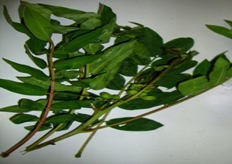

METTABE FEKONG

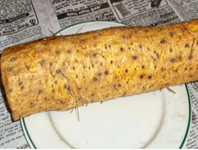
PURSLANE YAM
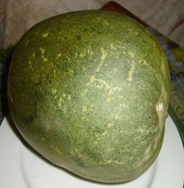
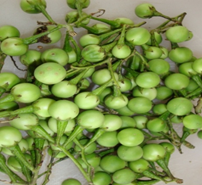
SINDIRE PEA EGG PLANT
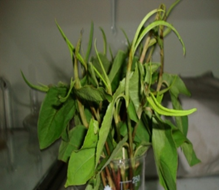

TAOLINGASKU SOLANUM
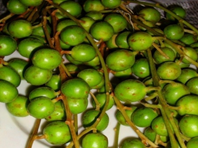
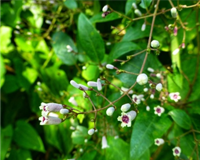
BEAD TREE GONDHO BATALI
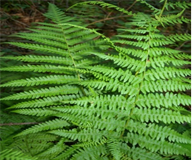
MOIKHUMBOUCHUK
None.
Authors declare that there is no conflict of interest.

©2020 Sarwar, et al. This is an open access article distributed under the terms of the, which permits unrestricted use, distribution, and build upon your work non-commercially.